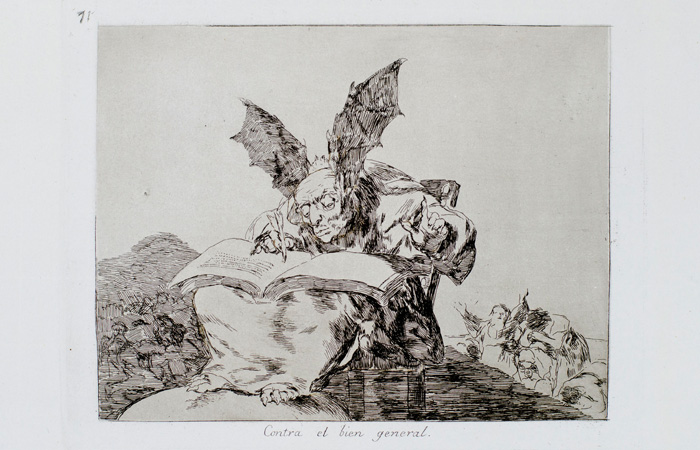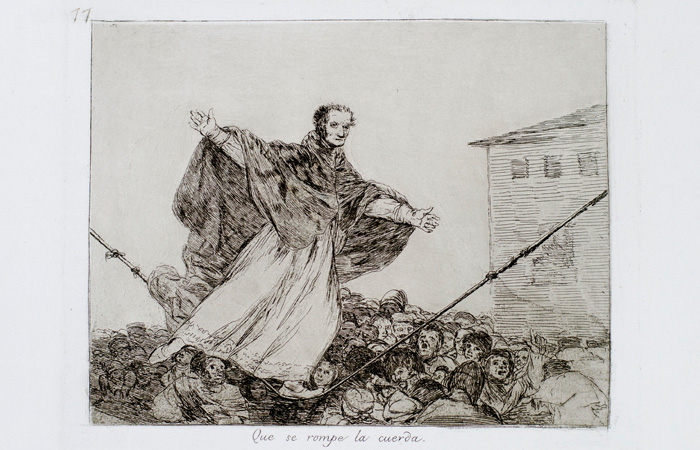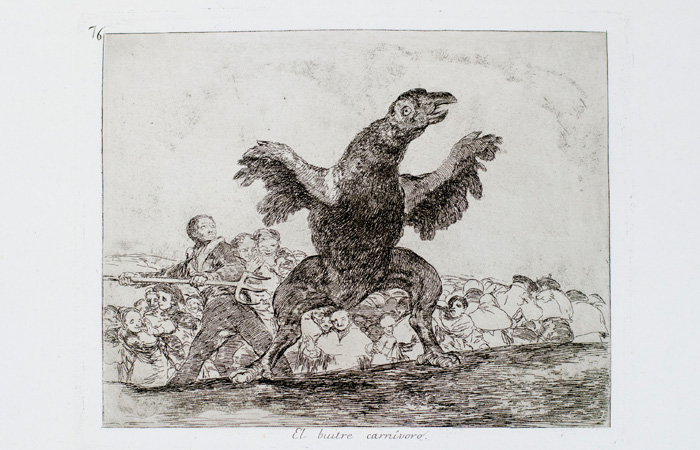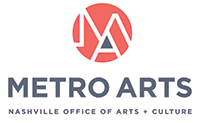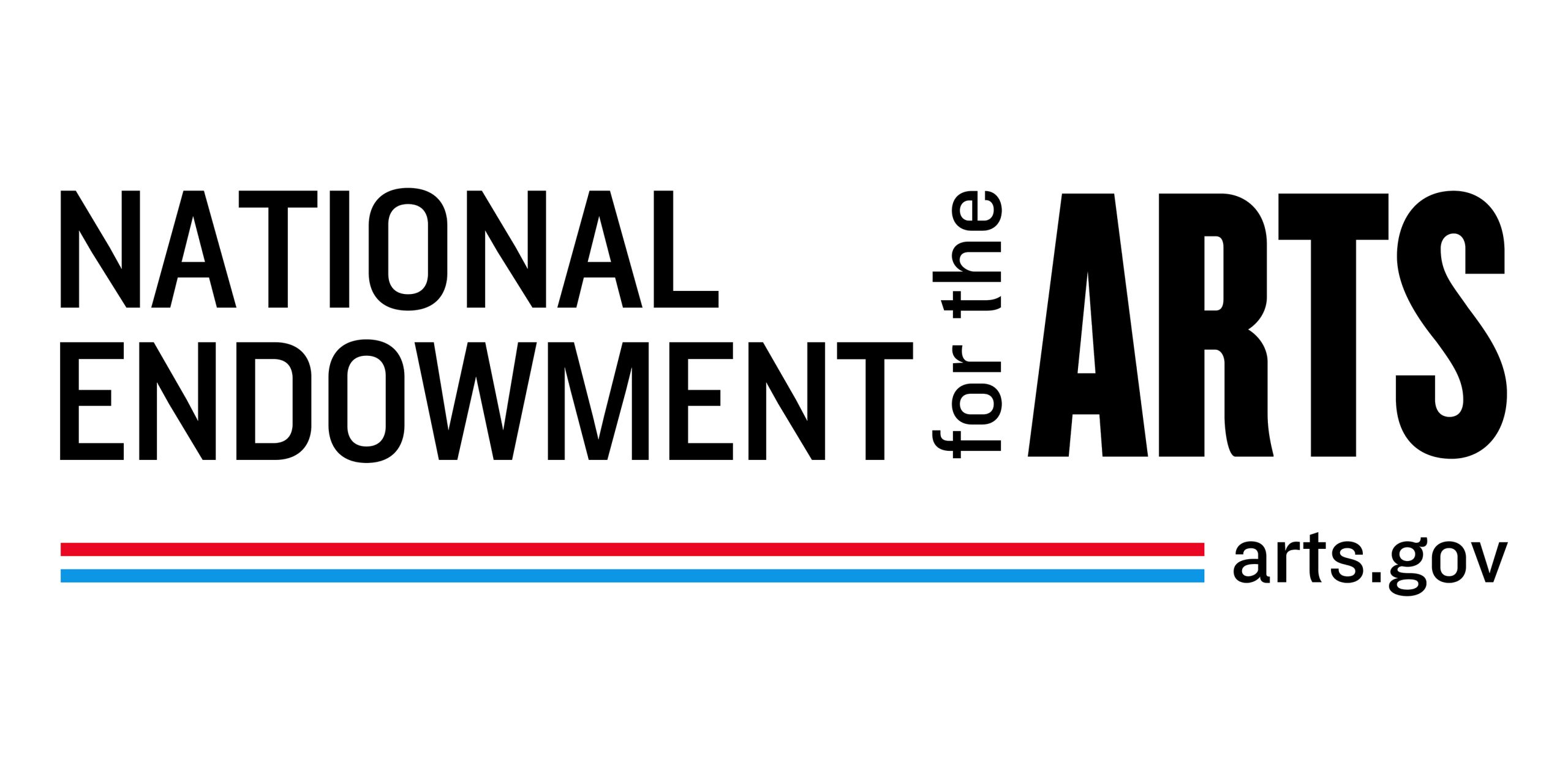Featuring a complete set of the first published edition of etchings produced by canonical Spanish painter Francisco de Goya, The Disasters of War documents the horrors of the Peninsular War of 1808–14 between Spain and France under Napoleon Bonaparte. The 81 aquatint etchings, 80 numbered works from the series and one working proof, are grouped into three main sections: the effects of war, the Madrid famine of 1811–12, and the disappointment at the restoration of the Bourbon monarchy. Because of their criticism of both France and the restored Bourbon monarchy, these works were not published until 1863, three decades after Goya’s death. The etchings explore such themes as carnage, conflict, famine, heroism and retribution. The exhibition presents new scholarship on the series, reviving Goya’s original intentions for the order in which it is to be seen, interspersing themes of war’s impact on city and countryside.
Goya: The Disasters of War is a collaboration of Pomona College Museum of Art and the University Museums of the University of Delaware. It is curated by Janis Tomlinson, director, University Museums, and circulated by the Pomona College Museum of Art.
This exhibition contains graphic depictions of war and may not be suitable for all audiences.
Watch a short video about the exhibition produced by The Tennessean.
SAFE: Soldier and Families Embraced
The images from Goya: The Disasters of War and Steve Mumford’s War Journals, 2003-13 depict scenes of war and conflict. Some of the images will be disturbing, but all serve to remind us that both inhumanity and humanity can result from times of conflict and ultimately, the aftereffects of war touch us, all.
The Frist Art Museum has been privileged to work with the Clarksville-based SAFE: Soldiers and Families Embraced, an organization that works diligently to assist the mental health community to offer free, confidential counseling and support to service members, Guard and Reserve members, veterans and military families. SAFE is staffed by trained counselors and social workers who have training specific to the needs of the military. Additional information can be found at www.thesafenetwork.org.
Additional online resources recommended by SAFE:
soldiersheart.net
Developed by Edward Tick, Ph.D. and Kate Dahlstedt, LMHC, provides a unique and comprehensive model to address the emotional, moral, and spiritual wounds of veterans, their families and communities. It offers a genuine healing and homecoming from Post Traumatic Stress Disorder by developing a new and honorable warrior identity supported by community.
afterdeployment.t2.health.mil
A mental wellness resource for service members, Veterans, and military families.
maketheconnection.net/conditions/ptsd
Hear honest and candid descriptions from Veterans of what life was like for them with PTSD. A variety of Veterans—men and women, younger and older—share their emotions, actions, and symptoms; how they learned they had PTSD; and what they did to get on a path to recovery.
aacap.org/AACAP/Families_and_Youth/Facts_for_Families
Published by the American Academy of Child & Adolescent Psychiatry, this link discusses the roles and feelings of the returning family member, the caregiver that stayed home, the children and the family as a whole.
sesamestreet.org/parents/topics/stress/stress01
By Sesame Workshop. The site offers advice on how to talk with children about tragedy and when to seek professional help.
ptsd.va.gov/public/PTSD-overview/reintegration/index.asp
From the National Center for PTSD, United States Department of Veterans Affairs

